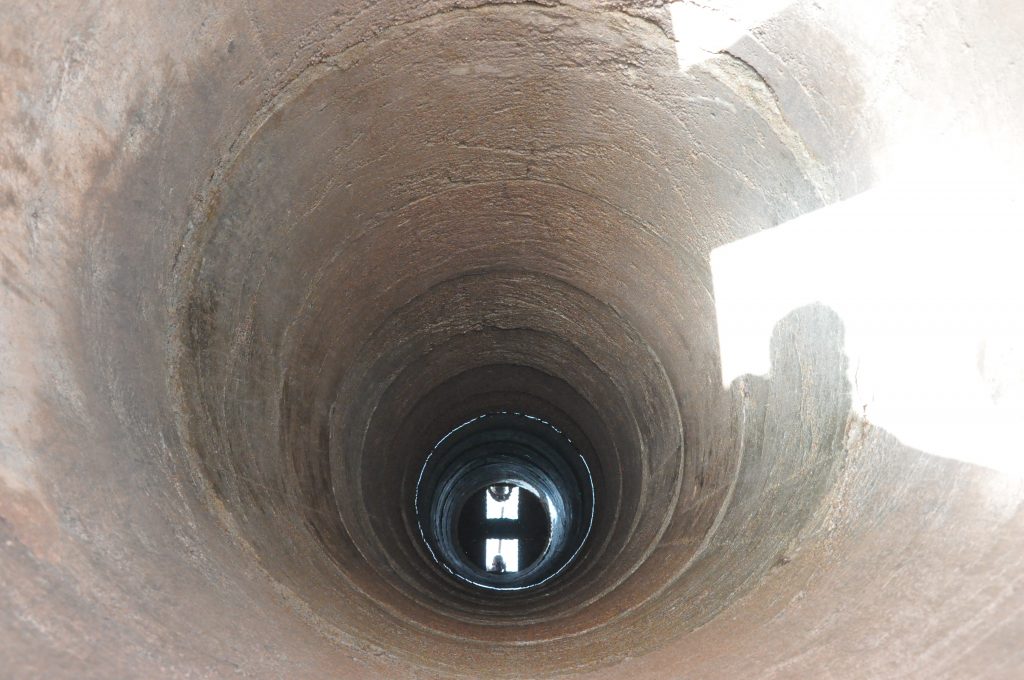The Drumming Well July 14, 2016
Author: Beach Combing | in : Modern , trackback
This is one of these paranormal legends that just seems to have no parallels: drbeachcombing AT yahoo DOT com. In Northamptonshire there was a well that drummed (!) on occasions of national importance.
‘[155] When I was a school-boy at Oundle, in Northamptonshire about the Scots coming into England, I heard a well, in one Dob’s yard, beating like any drum beating a march. I heard it at a distance; then I went and put my head into the mouth of the well, and heard it distinctly, and nobody in the well. It lasted several days and nights, so as all the country people came to hear it. And so it drumm’d on several changes of the times. When King Charles the Second died I went to the Oundle carrier, at the Ram Inn, in Smithfield, who told me their well had drummed, and many people came to hear it. And I heard it drummed once since.’
The name ‘Dob’s Yard’ may be interesting. In northern England, particularly in parts of the West Riding, Westmorland and northern Lancashire, with some outliers in Northumbria the Dobbie was a supernatural creature. But can anything else be added?
Sentimentalists, and most bizarrists are at heart, will be glad to know that though Dob’s Yard is a thing of the past there is still a Drumming Well Lane in Oundle.
In writing this Beach has come across, unlikely as this might seem, a parallel ‘noisy’ well: ‘While the Routing Well of Inveresk rumbled before a storm of nature’s making, the well of Oundle, Northamptonshire, gave warning of perturbations in the world of politics’
Kai Roberts, 14 Jul 2016, kindly wrote in to point that there is a clear parallel from Yorkshire. I’m quoting from Kai’s excellent book, much leaved on my shelf. ‘Meanwhile, at Harpham, the beat of a drum was once supposed to echo from a well close to the old manor house upon the death of any member of the Quintin family, formerly squires of the village. It is said to be the spirit of Tom Hewson, who served as a drummer-boy to the Quintin family in the Middle Ages. Legend relates that he was knocked into the well during an archery tournament as an enraged Squire Quintin pushed past him to scold an incompetent contestant. By the time Tom’s body was retrieved he had drowned, much to the anguish of his mother, Molly Hewson, a local witch. In her grief, she decreed: ‘Squire Quintin, you were the friend of my boy, but from your hand his death has come. Therefore, whenever a Quintin, Lord of Harpham, dies, my poor boy shall beat his drum at the bottom of this fatal well.’ The site is known today as the Drumming Well and another such well was once recorded at nearby North Frodingham, but its tradition is less defined. Kai Robers, Folklore of Yorkshire, 132.
ALN on the science, 14 Jul 2016: There’s nothing paranormal about the ‘drumming wells’.
Under certain conditions, wind blowing across the top of a well will generate low-frequency sound, in the same way that a bottle will generate sound when you blow across the top of it. The frequency of the sound will also depend on the water level in the well (or bottle).
Air passing over an aperture forms tiny vortices as it moves past the front edge of the aperture. When the vortices reach the aperture’s back edge, they make a wave of pressure that pushes air into and out of the well. As sound is nothing more than waves of pressure, this makes noise.
At a critical windspeed, a resonant point is reached. If the air in the well is slightly compressed, it will spring back out, then back in, then back out, and so on. With each oscillation in and out, the amount of movement gets smaller until it fades away.
But if the air is compressed again just as it finishes springing back out, and is headed back in, and this occurs repeatedly, the amount of air movement is amplified and doesn’t fade away. The vortices keep compressing the air in the well at just the right time to generate pressure waves which can be felt and heard as a rhythmic thrumming or drumming noise.
The technical term for this effect is the Helmholtz resonance. Hermann von Helmholtz demonstrated in the 1850s that the sound’s pitch depends on the volume of contained of air and the size of the opening. The larger the volume of contained air, the lower the pitch. The smaller the opening, the higher the pitch.


